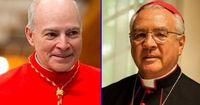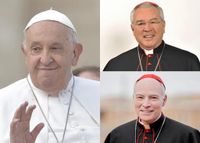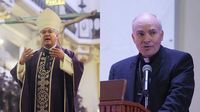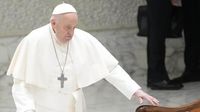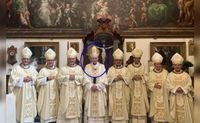The death of Pope Francis has left a profound impact on the global Catholic community, as thousands of faithful gathered in St. Peter's Square to remember him as a "man of peace" and a champion for the "poor." The pontiff, born Jorge Mario Bergoglio, passed away on Monday, April 21, 2025, at 7:35 AM in his residence at Casa Santa Marta. Cardinal Kevin Joseph Farrell announced the news through a video message, expressing gratitude for the Pope's example as a disciple of Jesus Christ. "With immense gratitude for his example as a disciple of the Lord Jesus, we commend the soul of Pope Francis to the infinite merciful love of God, One and Triune," said Farrell during the announcement.
As the world mourns, attention now turns to the College of Cardinals, which will convene to elect the next leader of the Catholic Church. The conclave will consist of 252 cardinals, with 138 eligible to vote and be elected as the new Pope, as they are under the age of 80. Among the potential candidates are two Mexican cardinals: Carlos Aguiar Retes and Francisco Robles Ortega.
Carlos Aguiar Retes, born on January 9, 1950, in Tepic, Nayarit, has had a distinguished career within the Church. He was ordained a priest in 1973 and has held numerous significant positions, including bishop of Texcoco in 1997 and archbishop of Tlalnepantla in 2009. In 2016, Pope Francis elevated him to cardinal, and he became the Archbishop Primate of Mexico in 2017. His leadership has made him a prominent figure in the Church, particularly in Latin America.
Francisco Robles Ortega, born on March 2, 1949, in Mascota, Jalisco, also stands as a strong candidate. He was ordained a priest in 1976, became bishop of Toluca in 1996, and was named archbishop of Monterrey in 2003. In November 2007, he was appointed cardinal by Pope Benedict XVI. Since 2012, he has served as the archbishop of Guadalajara and has also presided over the Mexican Episcopal Conference.
While both Aguiar Retes and Robles Ortega are seen as viable candidates, they face considerable competition from other cardinals who have more visibility and political alliances within the Vatican. Ana Luisa Trujillo, an academic from the National Autonomous University of Mexico (UNAM), noted that although the two Mexican cardinals may have a connection to a significant Catholic population in Mexico, they are not among the most frequently mentioned successors. "They need more projection or to build alliances in the discussions of the conclave," Trujillo stated in an interview.
Other notable names in the running include Peter Erdö, a conservative cardinal; Pietro Parolin, the current Secretary of State of the Vatican; and Luis Antonio Tagle, known for his close ties to Pope Francis. Additionally, figures like Peter Turkson from Ghana and Raymond Burke from the United States are also considered strong contenders.
The process for electing a new pope is steeped in tradition and protocol. Following the announcement of the Pope's death, the Church enters a period known as "sede vacante" (vacant see), during which the camerlengo, currently Cardinal Farrell, administers the Vatican. This period is unpredictable in length, as it depends on the speed with which the cardinals can reach a consensus.
The first step after the Pope's death involves sealing the apartment of the deceased pontiff and destroying his Fisherman's Ring, a symbol of papal authority. Following this, the Church will observe a nine-day mourning period known as "Novendiales," during which masses will be held in honor of Pope Francis.
Once the mourning period concludes, the conclave will be convened. Cardinals under the age of 80 will gather in the Sistine Chapel, isolated from outside communication, to deliberate and vote on the new Pope. A two-thirds majority is required for a candidate to be elected, and the outcome will be signaled to the world with the traditional smoke signals from the chapel chimney: black smoke indicates no election, while white smoke announces the election of a new Pope.
Roberto Velázquez Nieto, a researcher at the Vatican Apostolic Archive, emphasized that while neither Aguiar Retes nor Robles Ortega are among the most frequently mentioned candidates, they should not be discounted. "Anyone can 'draw the tiger's lottery.' We shouldn't forget that Cardinal Jorge Bergoglio was not among the favorites at the time, yet he became Pope Francis. Papal elections can always bring surprises," he noted.
Mexico's significant Catholic population, alongside Brazil, positions it strategically in the context of the conclave. Its cultural and economic ties to the Vatican, especially through the Guadalupan cult, could play a role in the selection of the next pontiff.
Both Aguiar Retes and Robles Ortega have demonstrated their commitment to the vision of the Church promoted by Pope Francis, avoiding extreme positions and maintaining openness to dialogue. Their extensive backgrounds in leadership within the Church make them strong contenders for the papacy.
As the Catholic world prepares for this transition, the legacy of Pope Francis and the potential for a new leader to shape the Church's future remain at the forefront of discussions. The upcoming conclave not only represents a pivotal moment for the Church but also a chance for continued evolution in its approach to modern challenges.
